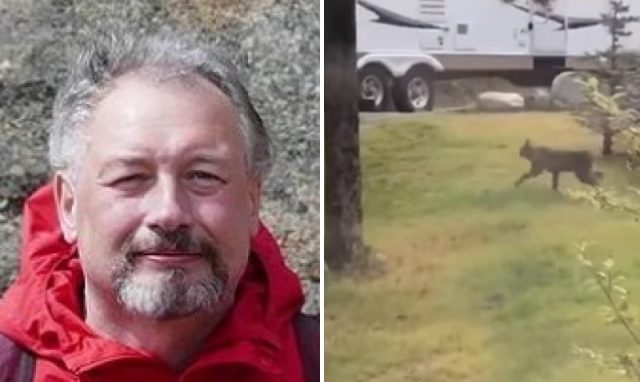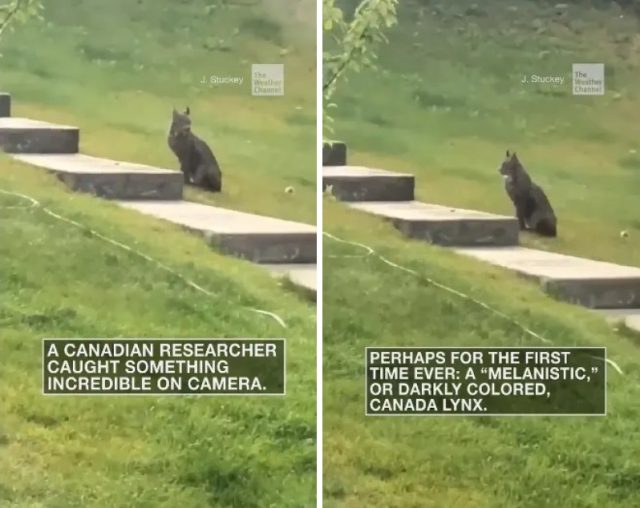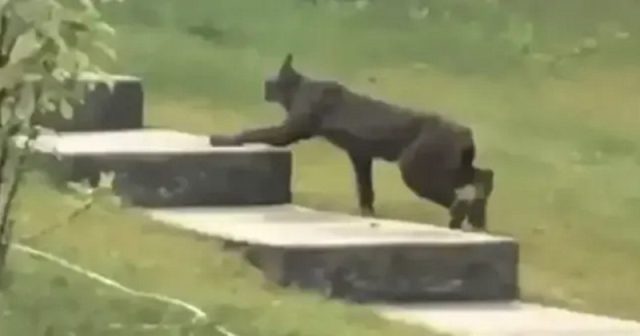A video has gone viral after a rare and elusive creature was captured on cell phone footage for the first time ever. The groundbreaking discovery stunned both viewers and scientists alike.

When Thomas Jung, the Senior Wildlife Biologist with the Government of Yukon and Adjunct Professor at the University of Alberta, happened upon a sight that he believed no one had ever witnessed before, he knew he had to capture it on camera. Luckily for us, he managed to quickly grab his cell phone and hit record, capturing a rare and elusive creature in video footage that would quickly go viral.
It was August 29, 2020, and Jung was walking around a rural, residential area near the town of Whitehorse in Yukon, Canada, which “contains low-density housing embedded in a mature forest dominated by white spruce,” according to Phys.org. At a distance of about 50 meters, something caught Jung’s eye, and he immediately began to record what would become a viral 30-second clip.

In the video, which was eventually posted to YouTube, what appears to be some type of wild cat is seen sitting calmly in someone’s yard. The animal appears relatively undisturbed by the presence of nearby people as a dog barks loudly in the background. Then, as the creature “quickly tires of the barking,” it “starts to walk away around the 16-second mark, eventually slinking off camera and out of the yard,” as described by Outdoor Life.
Although the video is of low resolution, Jung felt confident he had captured a lynx due to the short tail and ear tufts that were clearly visible even in the grainy images. According to Jung, it couldn’t have been a bobcat because Whitehorse is situated more than 650 miles north of that species’ native range. However, there was something very different about this particular lynx — something that had never been documented before.
“It had a black coat containing whitish gray guard hairs throughout, as well as whitish gray hairs in the facial ruff and the rostrum and dorsal regions,” Jung reported.

Scientists and several Canada lynx experts examined the footage and confirmed that Thomas Jung had captured the first-ever documentation of a melanistic Canada lynx, according to a report published in the scientific journal Mammalia.
“Several Canada lynx experts also confirmed that the animal recorded was a lynx,” Jung wrote in his report, which was published in the scientific journal. “Photographs extracted from the video clearly show a melanistic lynx,” he added.
Melanism is a relatively rare genetic mutation that affects all sorts of wildlife species, including mule deer, alligator gar, and wild cats. In fact, at least 20 all-black bobcats have been recorded over the past hundred years, according to Jung’s report, but no one in the scientific community had ever seen or heard of an all-black lynx before, he said.
“I contacted several lynx experts with extensive live capture and camera trapping experience, and no one had observed or even heard of a melanistic Canada lynx,” Jung explained. “Despite being commonly observed and targeted in the fur harvest, no previous reports of a melanistic Canada lynx exist.”

Like the snowshoe hare, which happens to be the lynx’s favorite prey, the lynx’s coat typically changes with the seasons. While they are reddish-brown in the summer, the lynx transitions to a silvery gray coat in the wintertime. This caused Jung to speculate that the all-black lynx might have a difficult time hunting and surviving in the wild due to the loss of camouflage, which lead him to suggest the trait was “maladaptive” in this instance.
“Dark-coloured Canada lynx are likely far less camouflaged to snowshoe hare during winter when the ground is covered with deep snow,” Jung wrote. “Hence, melanistic individuals would be at a distinct disadvantage when hunting hares during winter.”
In addition to being the first recorded case of melanism in a Canada lynx (or Lynx canadensis), “this sighting adds to only a small number of coat color variations found in any member of the genus Lynx,” according to Phys.org.
“There are only a small number of records of coat color polymorphisms in the genus Lynx,” Jung wrote in his published paper.
Thanks to the readiness of smartphones in nearly everyone’s pocket, Thomas Jung was able to give the world its first good look at a very rare sight — a black-coated Canada lynx. While we often decry the negative impact that technology has had on society, this is one case where having a camera readily available proved to be beneficial, allowing a rare wildlife sighting to be caught on video for everyone to enjoy.
However, it’s worth noting that such beauty may have been missed if Thomas Jung had his face buried in the phone, rather than observing his surroundings. In other words, there’s a lot we can learn here — and not just about science and wild animals. Keep your eyes up rather than on your phone because you never know what rare sight you might be blessed to see.







